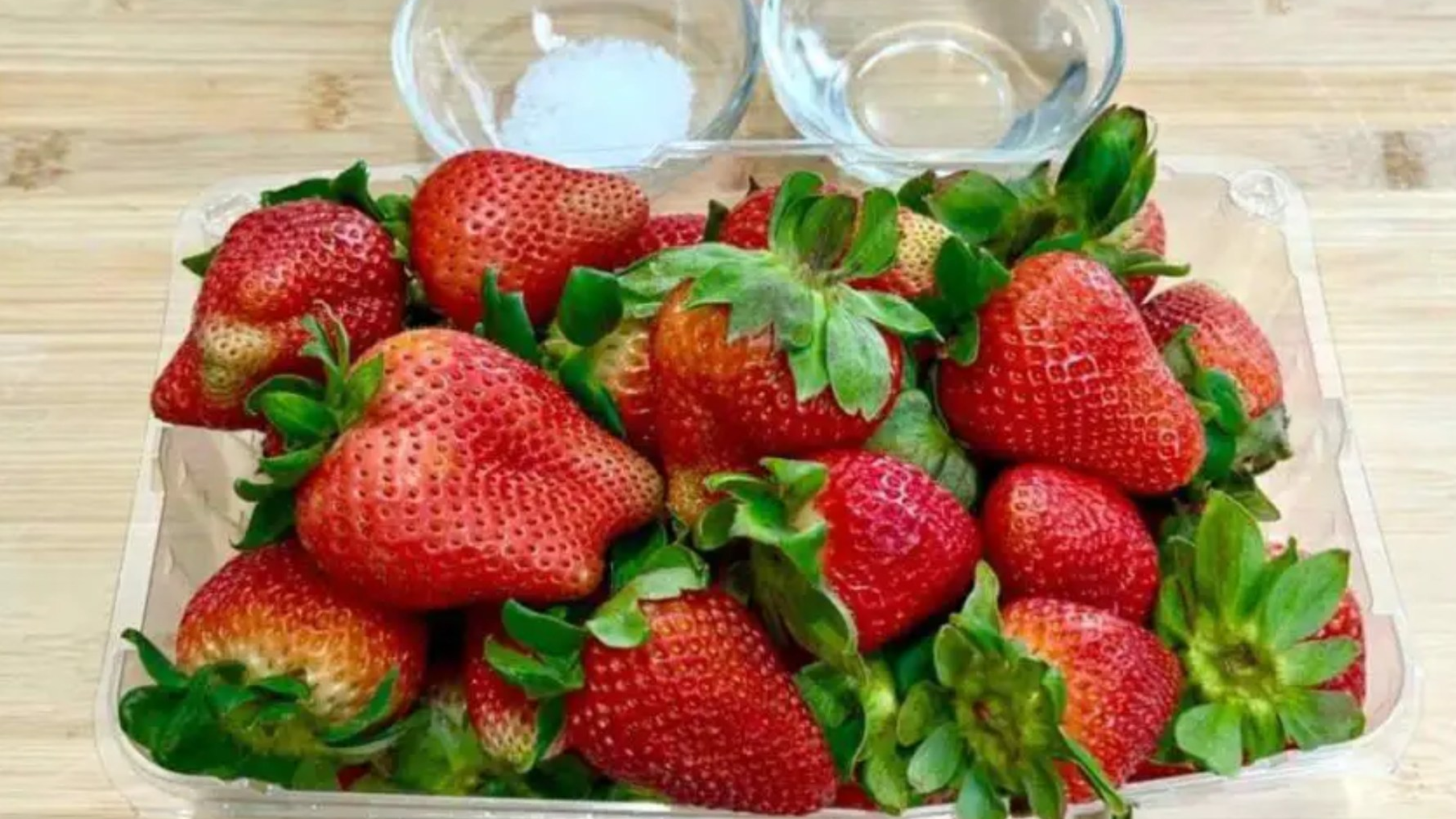Spring has finally arrived, bringing with it the bright, warm days and a burst of fresh flavors. As the season changes, so do our cravings for seasonal fruits, especially strawberries. These red jewels of spring are delicious, versatile, and perfect for desserts, smoothies, or simply enjoyed straight from the basket. However, many people worry about finding worms or insects hidden inside.
The good news is that with a simple, natural method, you can thoroughly clean your strawberries at home—completely free of insects, worms, and dirt—perfectly safe for your health. Keep reading to discover how to do it quickly and easily, with no need for expensive or harsh chemicals.
Why Are Strawberries Often Filled with Insects?
First, let’s understand why this happens. Strawberries grow close to the ground, making them particularly susceptible to bugs, worms, and dirt. Tiny insects or larvae often hide beneath the surface, especially in organic or locally grown berries that haven’t been treated heavily with pesticides.
When you buy strawberries, it’s normal to find some worms or tiny bugs, especially if they aren’t pre-washed thoroughly. These are usually microscopic and not harmful but can be off-putting. Proper cleaning makes sure your strawberries are safe and delicious.
The Natural Method to Clean Strawberries: Step-by-Step

Want to enjoy your strawberries without worry? Here’s a simple, efficient process that uses common household ingredients:
What You Need:
- A clean baking dish or shallow container
- Water
- Coarse salt
- White vinegar
- A second bowl for rinsing
- A knife or scissors to remove the stems
Step 1: Prepare the Cleaning Solution
Fill your baking dish with water—enough to submerge your strawberries comfortably. Add a generous amount of coarse salt (about a tablespoon per liter of water) and stir until it dissolves completely. Then, pour in a splash of white vinegar—roughly 1/4 cup per liter of water.
Why salt and vinegar?
Salt helps draw out insect larvae and dirt, while vinegar acts as a natural disinfectant. Together, they create a powerful cleaning solution that’s gentle on your fruit yet effective.
Step 2: Soak the Strawberries
Place your strawberries gently into the solution. Allow them to soak for about 10 minutes. During this time, tiny worms, insects, or larvae will be expelled from the fruit’s surface and will be visible in the water.
You might notice the water turning darker or cloudy—this is a sign that impurities and tiny bugs are being removed.
Step 3: Rinse and Check
After soaking, carefully remove the strawberries with a slotted spoon or your fingers. Rinse each berry thoroughly under running water in a second bowl of clean water to wash away any residual dirt or solution.
It’s important to pay special attention to the areas around the stem, as these are common hiding spots for insects.
Step 4: Remove the Stems
Using a small knife or scissors, cut or gently twist off the green stems. The stems are often where insects congregate, and removing them ensures you get rid of any hidden pests.
Pro tip: Even after thorough washing, worms can sometimes cling to stems, so this extra step guarantees safety and cleanliness.
Why This Method Works Wonders
Not only does this process eliminate most insects and larvae, but it also makes your strawberries safer for immediate consumption. The solution pulls out dirt and pests efficiently, leaving you with clean, fresh berries that retain their flavor and texture.
Plus, this method uses ingredients you already have in the kitchen—no need for costly or chemical-based disinfectants. It’s eco-friendly, natural, and safe for children and pets.
Additional Tips for Perfectly Clean Strawberries
- Avoid soaking for too long: While 10 minutes is enough, over-soaking can soften the berries or cause them to lose some flavor.
- Inspect visually: Before rinsing, check for any visible bugs or debris, especially around the stem.
- Use organic strawberries when possible: They often have fewer pesticides, but still benefit from this cleaning method.
- Store properly: After cleaning, dry your strawberries gently with a paper towel or cloth and store them in a ventilated container to keep them fresh longer.
Tips for Using Cleaned Strawberries
Now that your strawberries are perfectly cleaned, they’re ready to be enjoyed! Use them in salads, smoothies, desserts, or as a healthy snack on their own.
They also make excellent ingredients for cakes, tarts, or refreshing beverages like cocktails and fruit-infused water.
Final Thought
Spring is a delightful time to indulge in fresh fruits like strawberries, but it’s essential to prepare them properly for safety and enjoyment. With this simple, natural cleaning method, you can confidently enjoy your berries without worries. Plus, it’s environmentally friendly and budget-conscious—your perfect solution for a healthy, tasty spring season!

